Hello everyone!
Today I'd like to share with you a wonderful walk through the city of Meknes, where I started with a visit to the Meknes Museum located near the great Mansour Gate and the historic El Hedim square. This museum is full of history and culture that reflect the heritage of this ancient city. Walking through the corridors of the museum, I was surrounded by magnificent artefacts and works of art that illustrate the greatness of Moroccan civilisation.
Afterwards, I decided to explore the narrow streets of the old town (Medina), where the old traditional buildings create a charming and unique atmosphere.
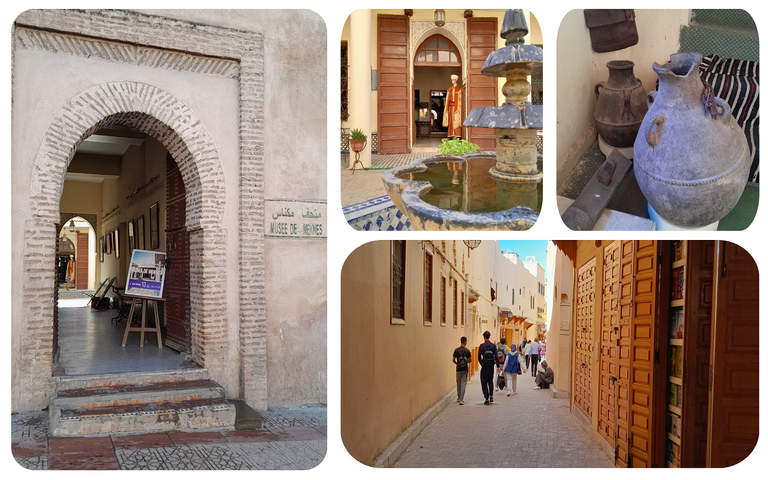
I hope you enjoy all the photos I took at each stage of my journey. I also hope you'll feel like you're accompanying me on this wonderful adventure!

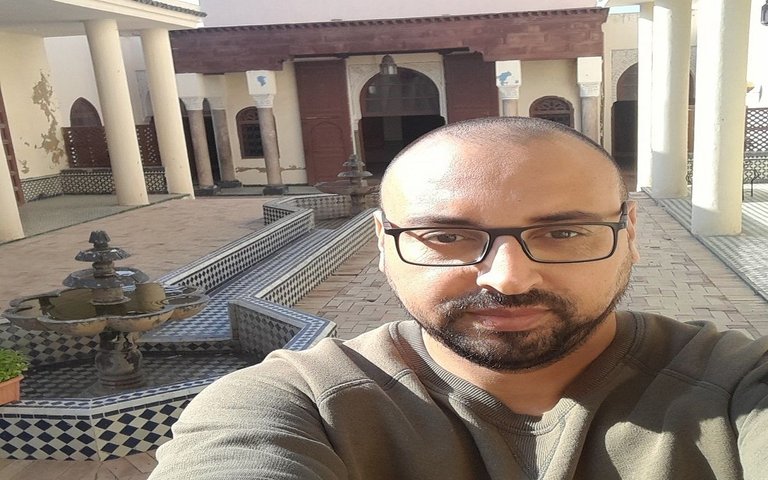
On entering the museum, I paid a small entrance fee of 10 dirhams. Once inside, the beauty and authenticity of the place plunged me straight into Moroccan history.
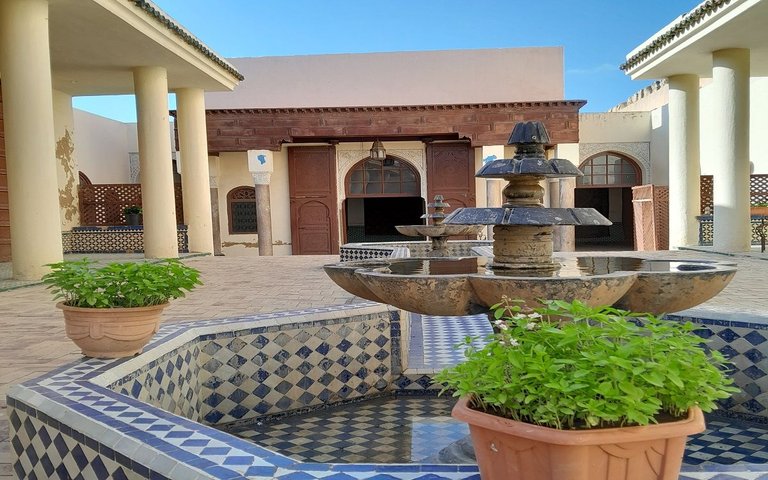

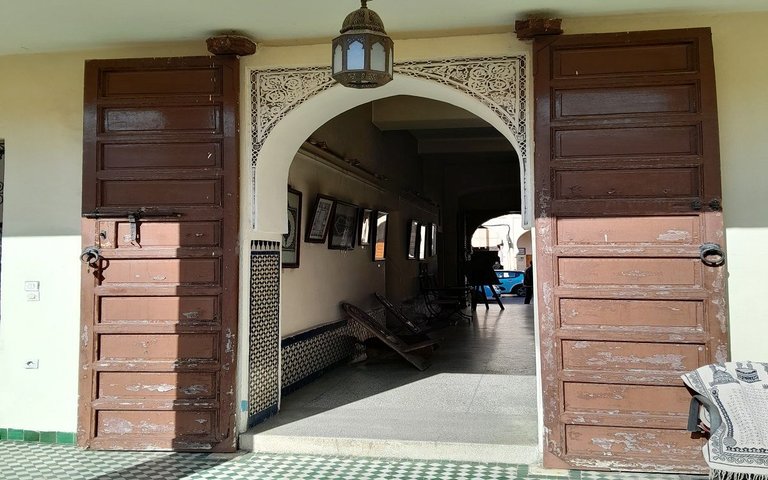
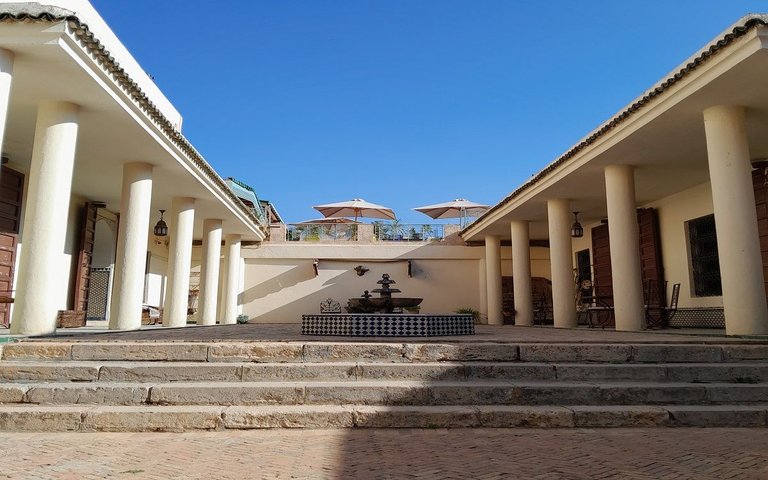
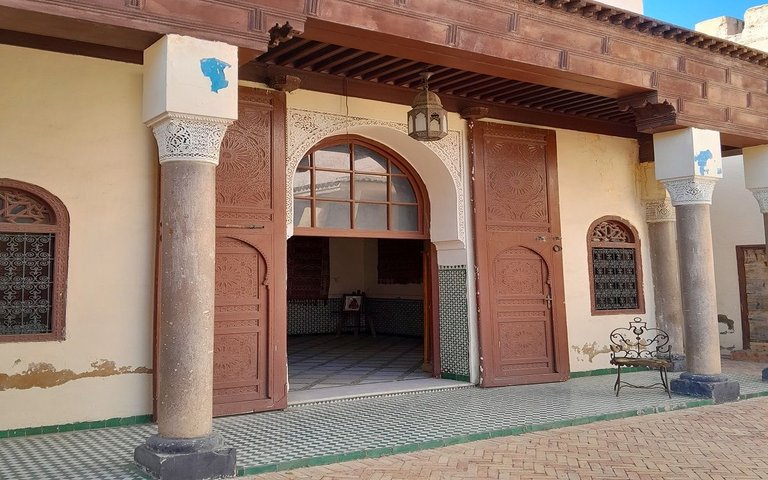
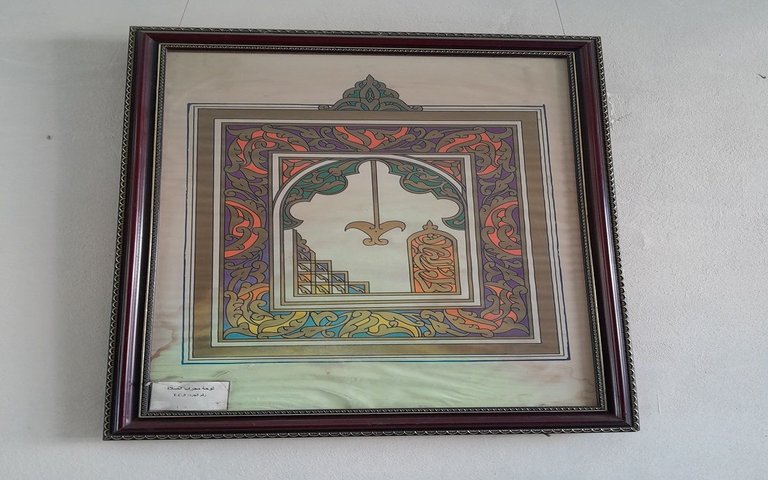
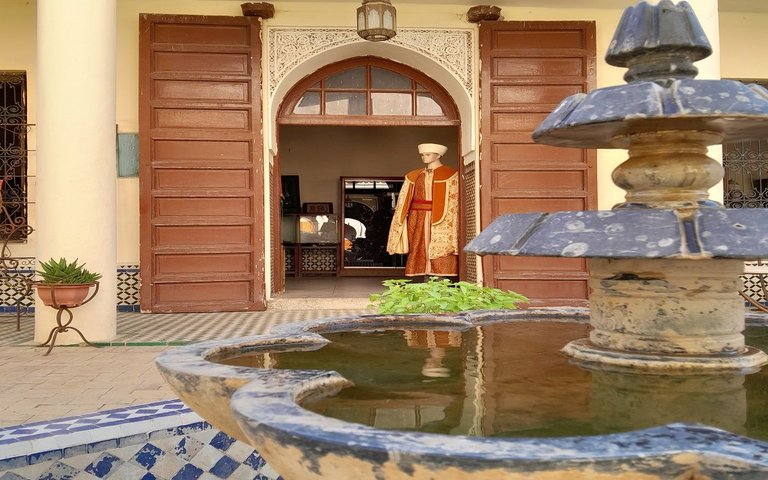
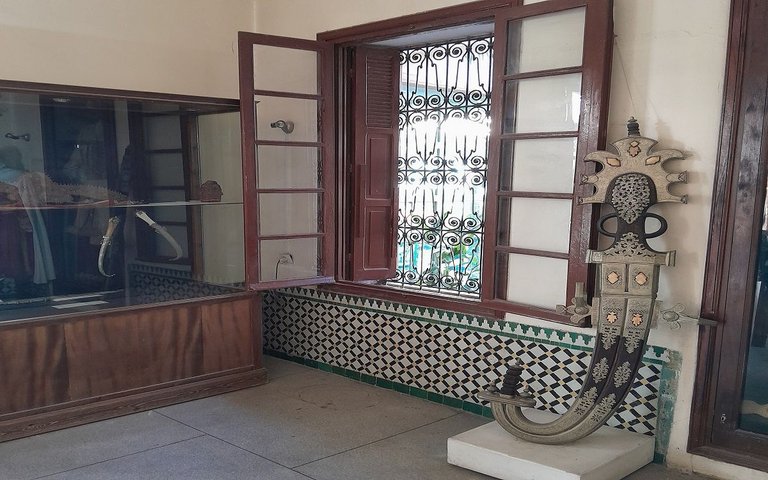
There are pots, carpets, chairs and other old pieces that testify to the richness of our heritage. It's a truly magnificent place, and you can feel the beauty of every object here.
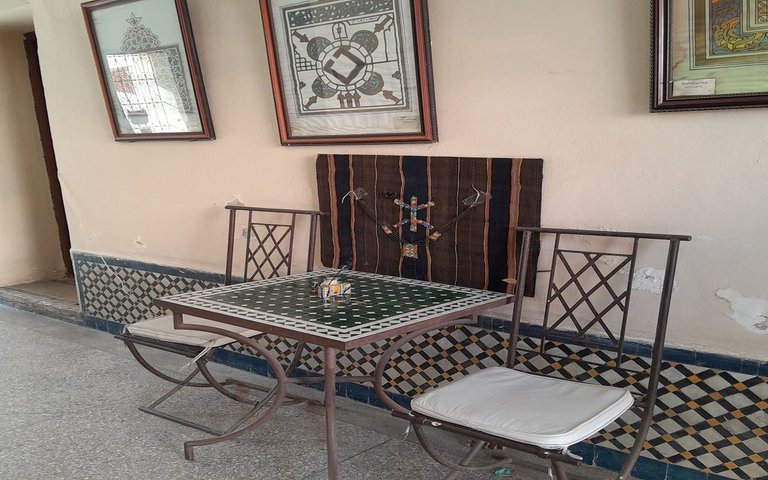
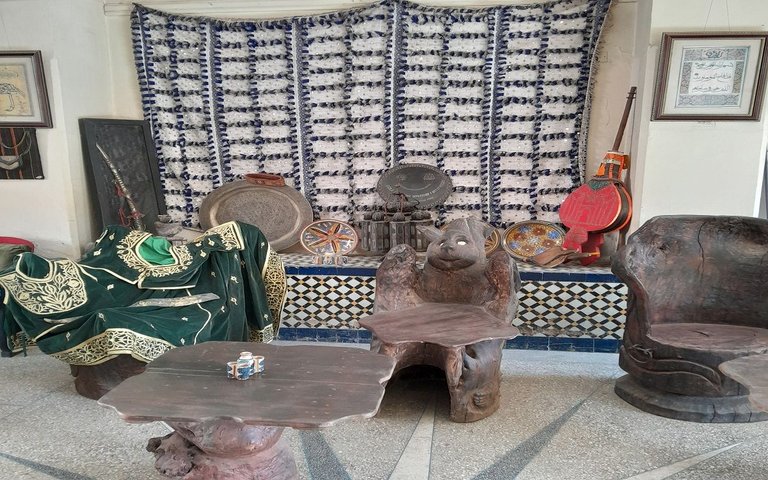
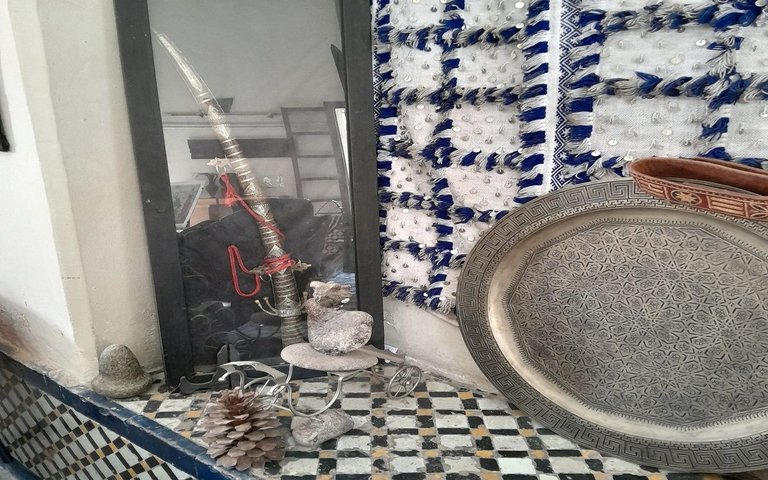
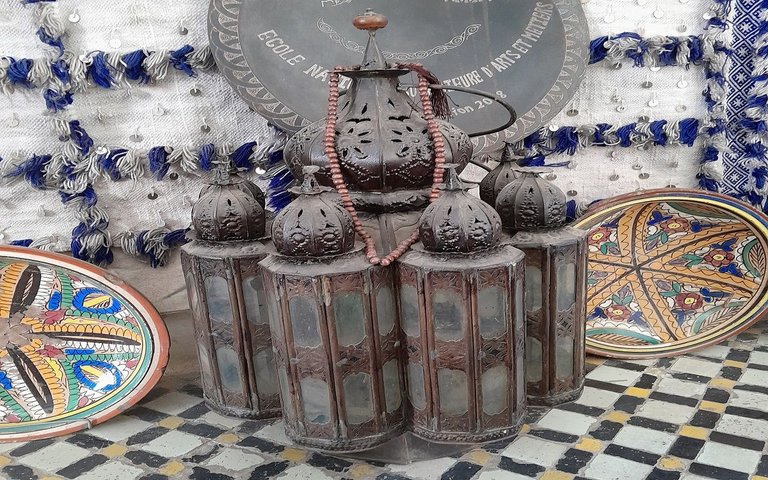
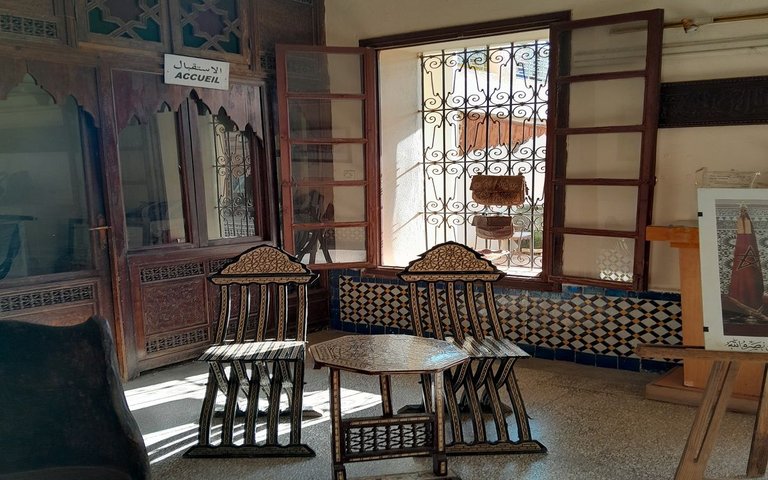
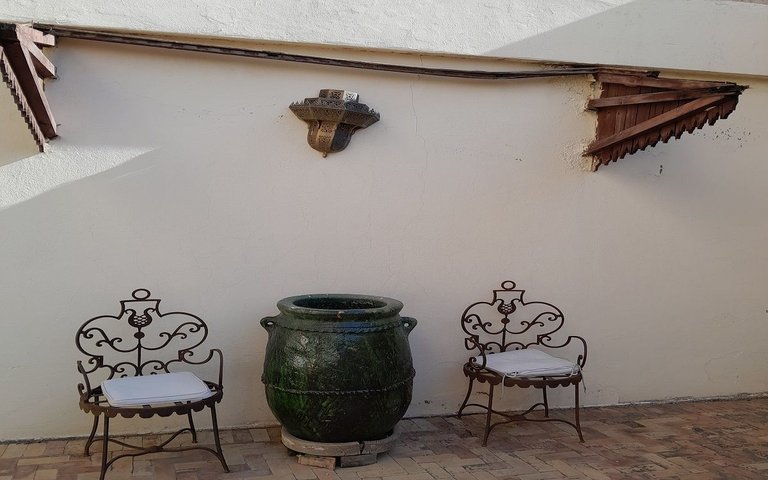
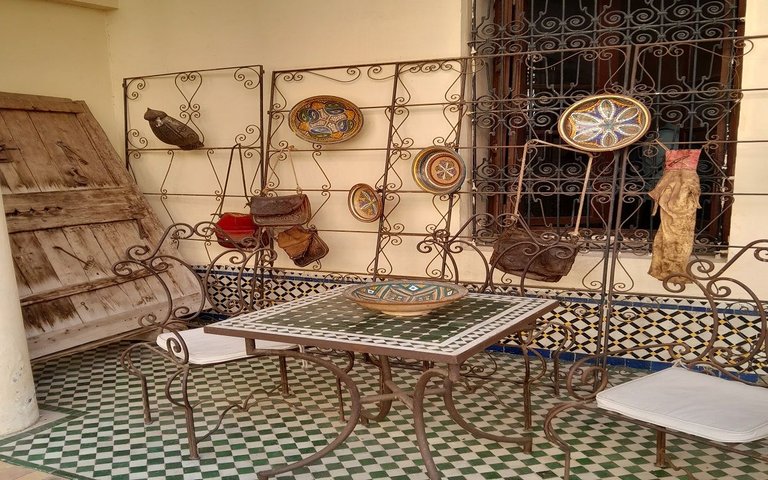
I really admired the traditional clothing of the ancient warriors and the women's accessories. From belts decorated with gold thread to embroidered silk kaftans, each piece tells a unique story. There was even a beautifully decorated wedding dress, complete with traditional accessories.
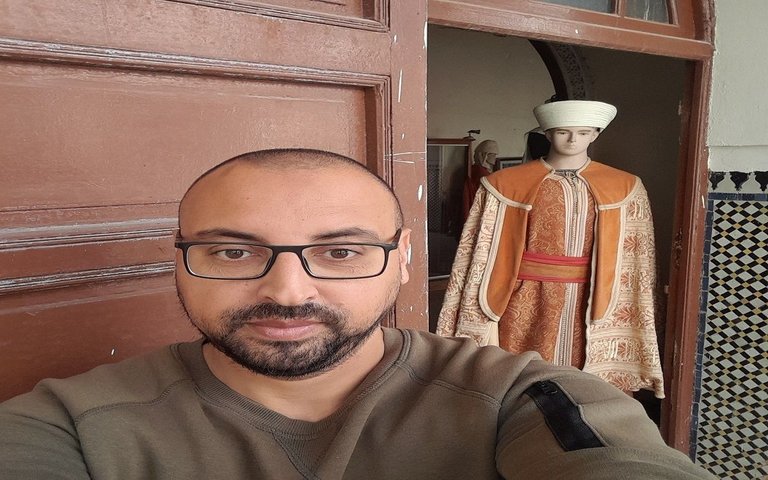
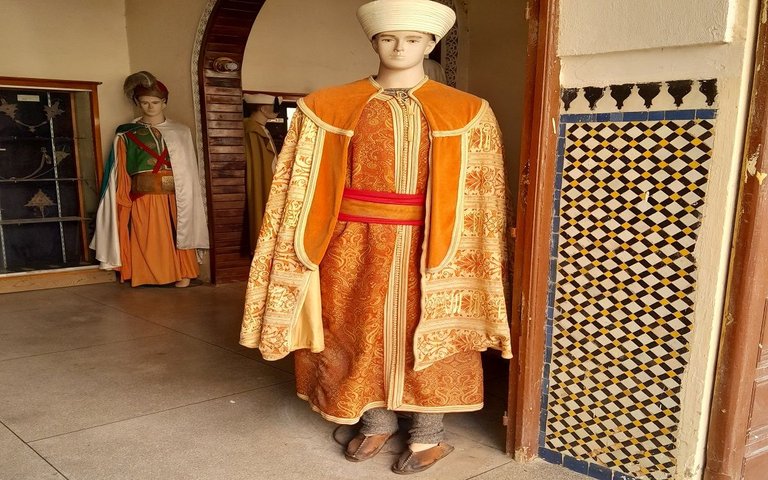
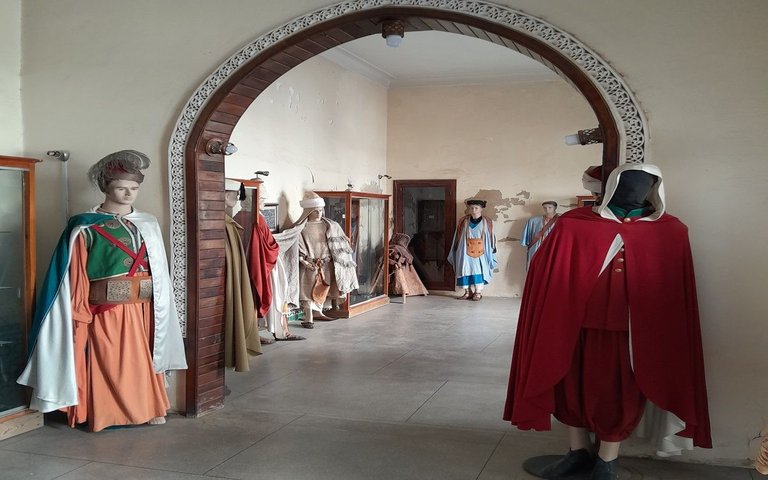
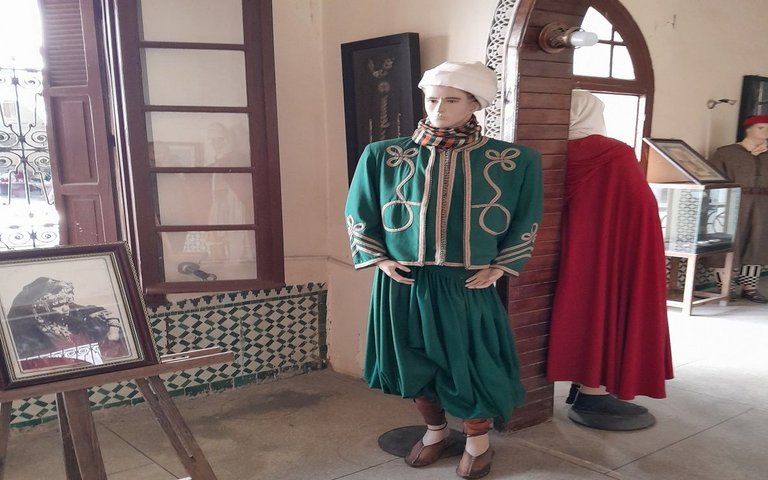
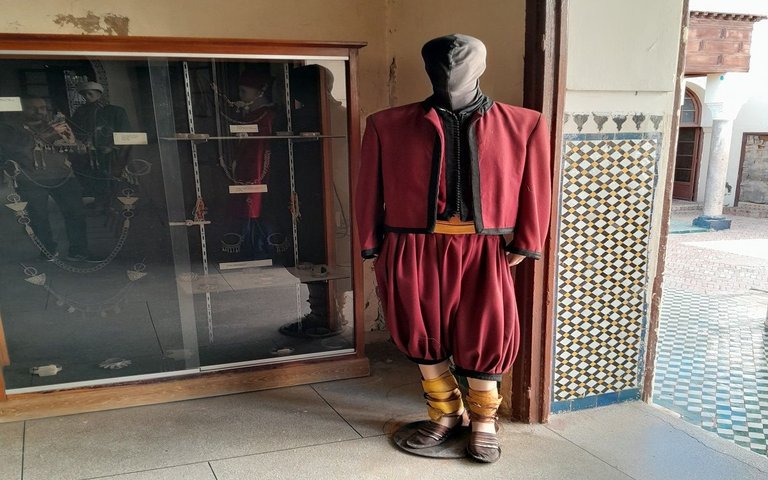
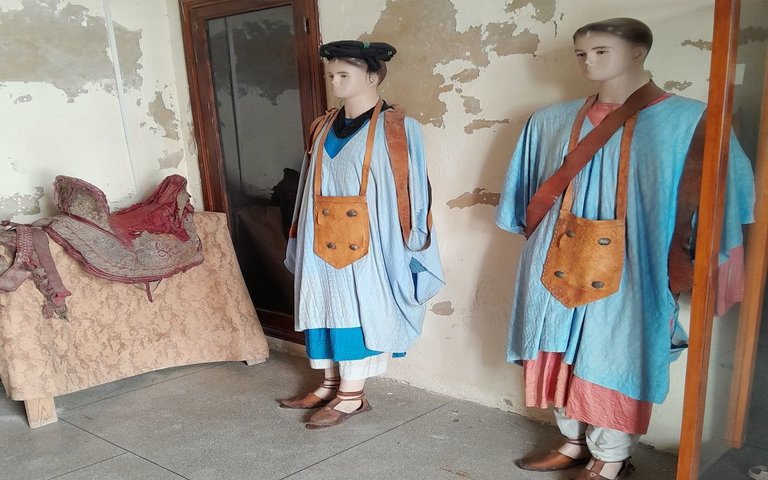
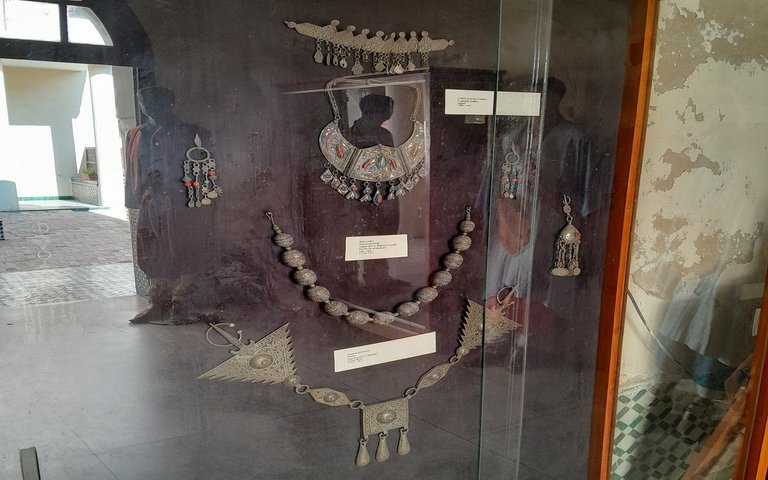
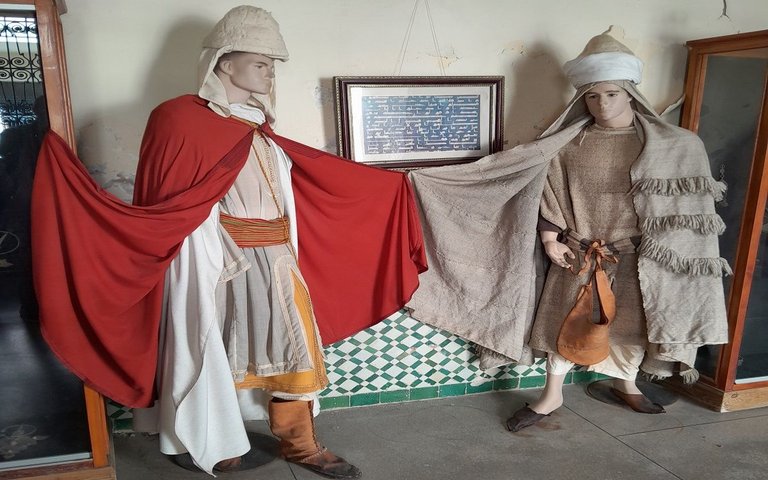
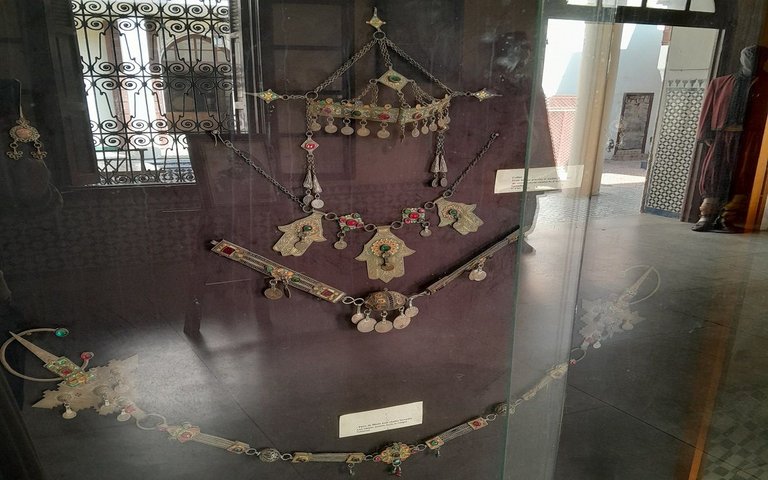
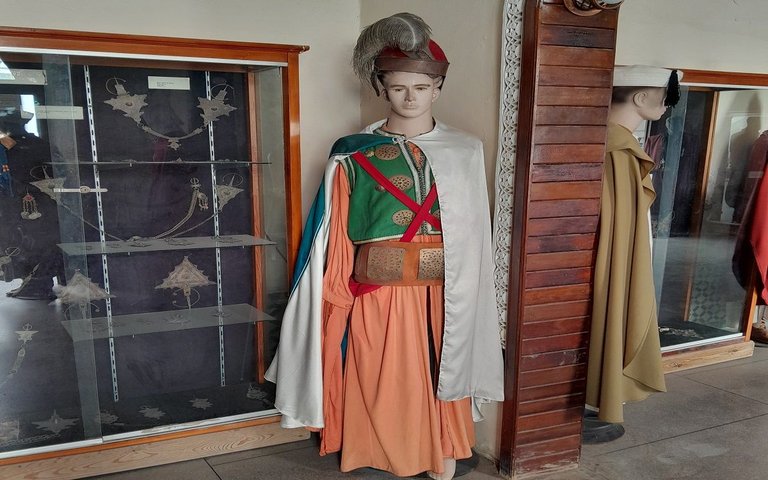
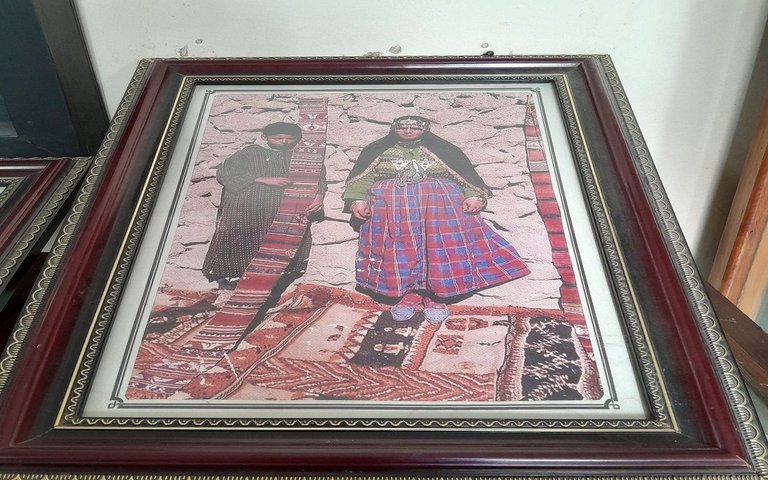
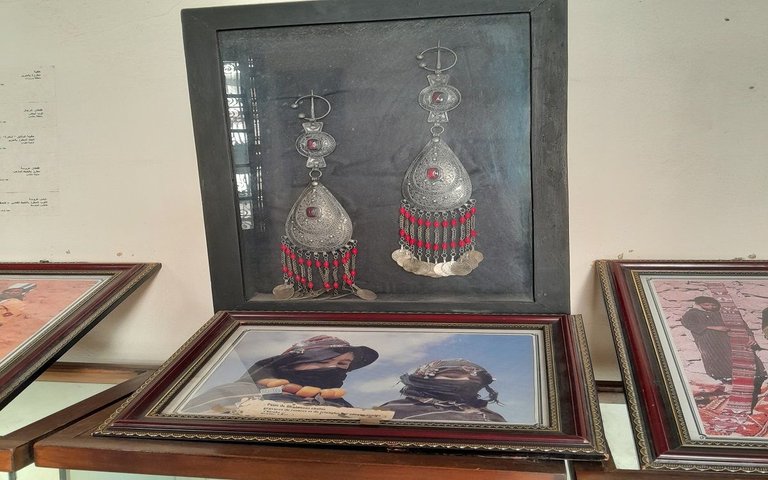
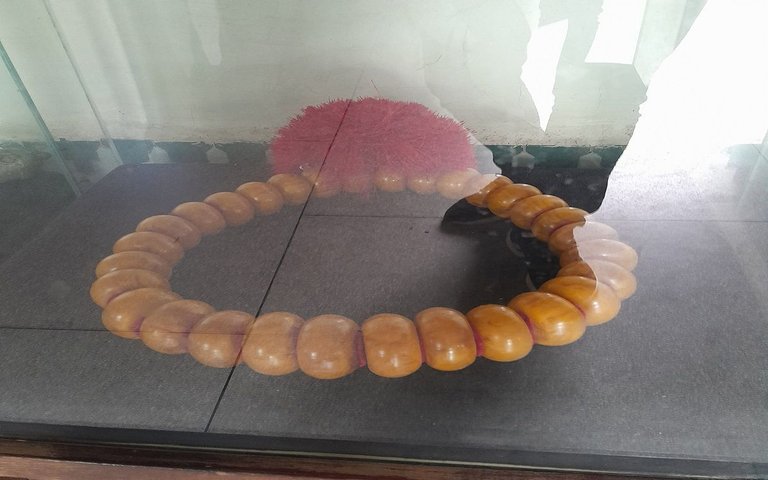
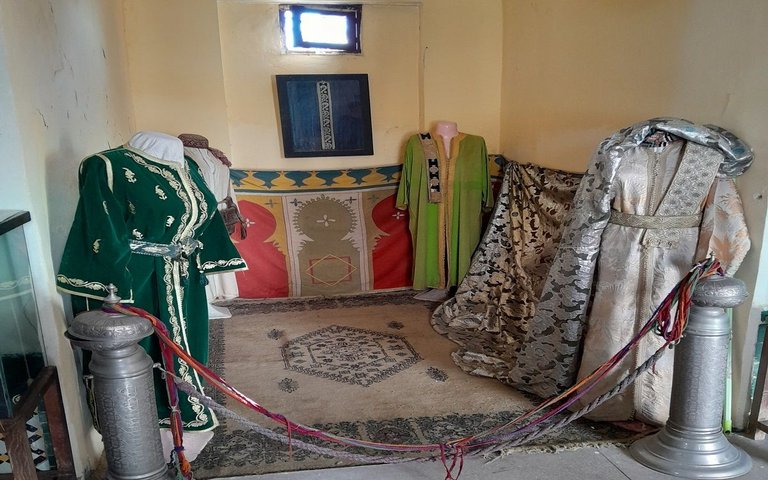
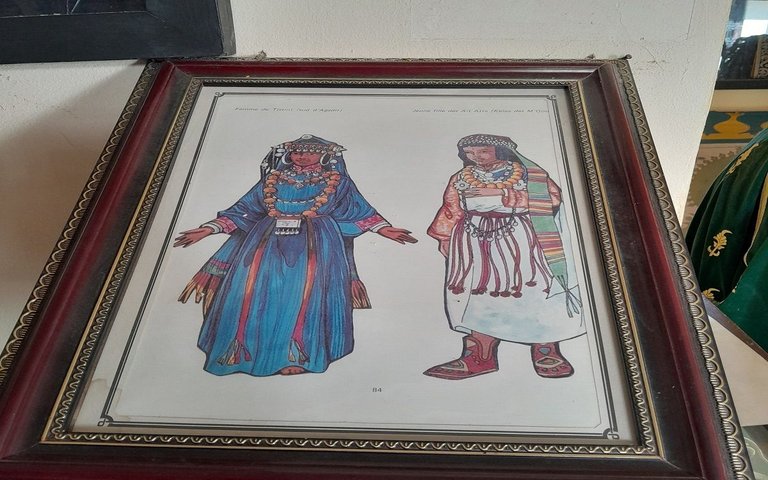
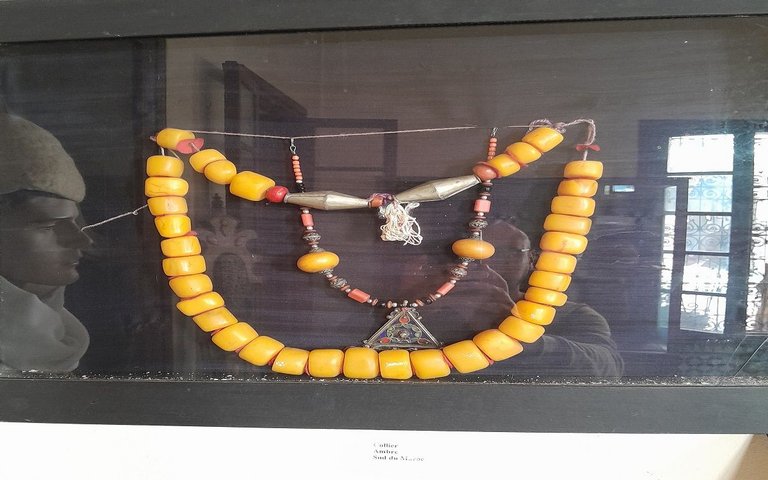
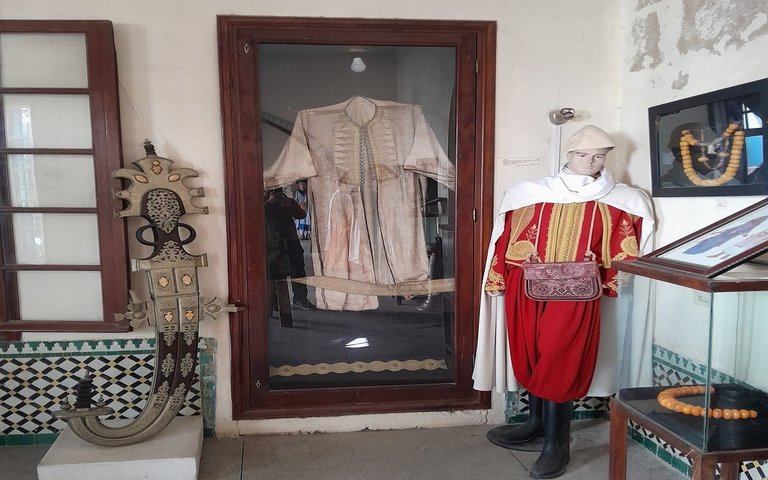
Then I discovered the cooking and ceremonial utensils. Among them, a magnificent collection of teapots, large copper trays for tea, and tools such as the ‘mahrass’ (mortars) that the ancestors used to crush spices or seeds.
I also saw some beautiful pottery and traditional containers, including those used to store grain and flour in the past. It's incredible to see the ingenuity with which our ancestors designed everyday objects that are now museum pieces.
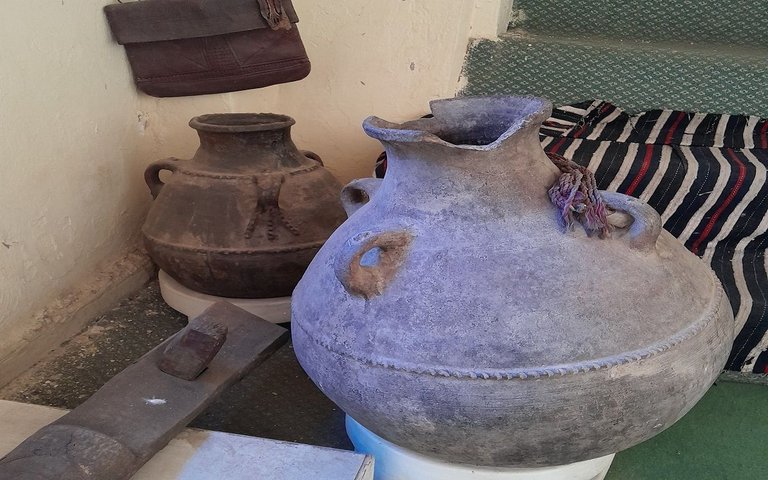
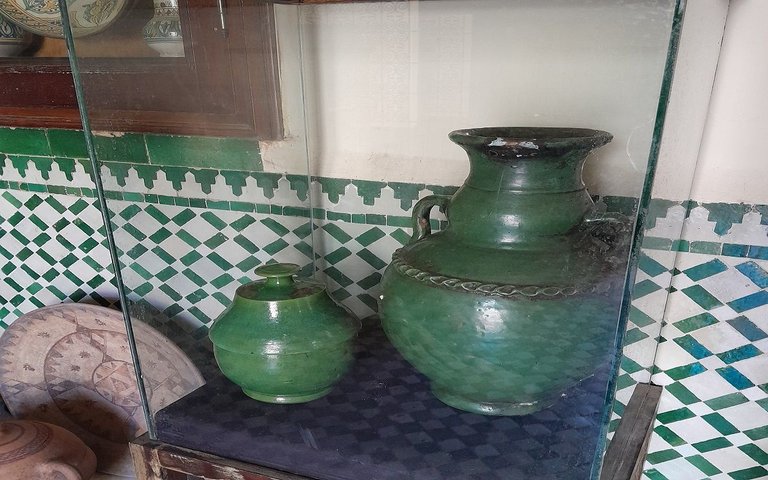

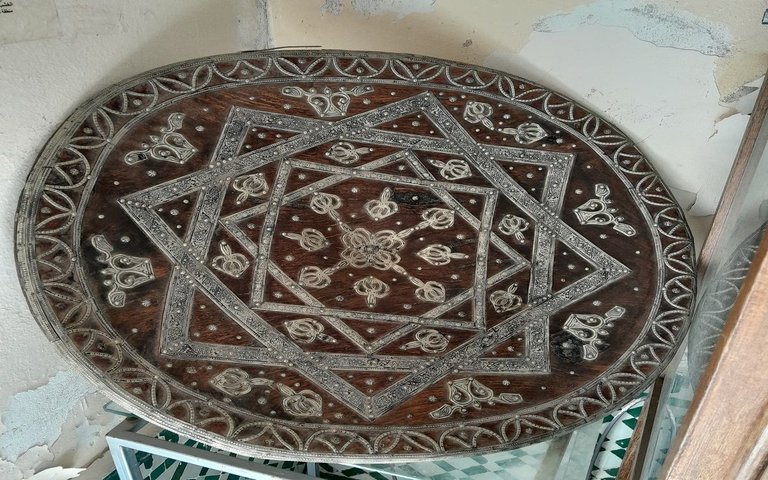
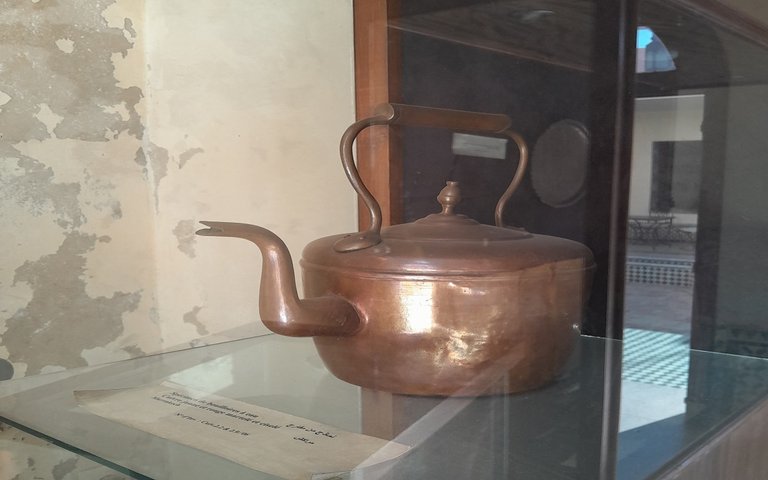
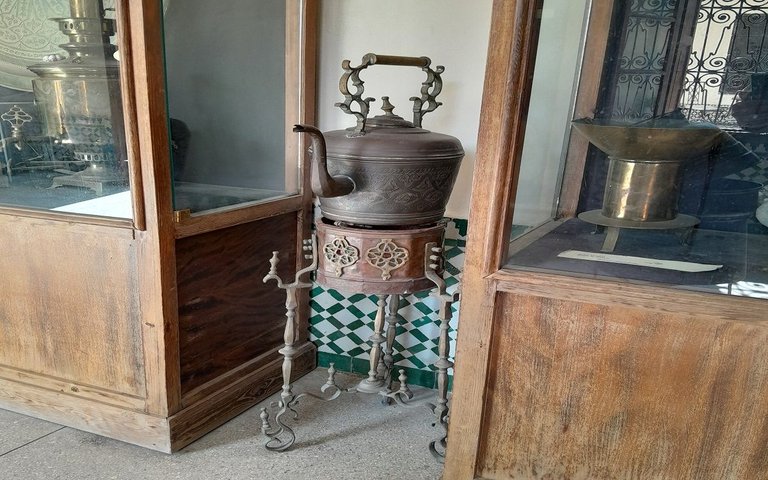
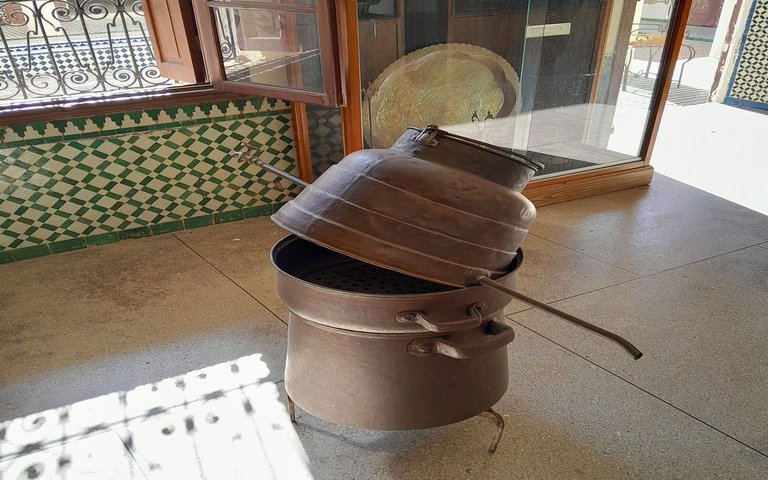
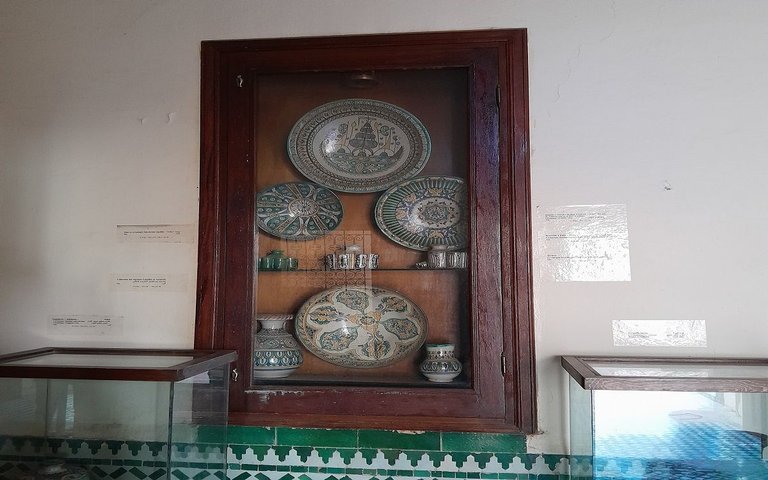
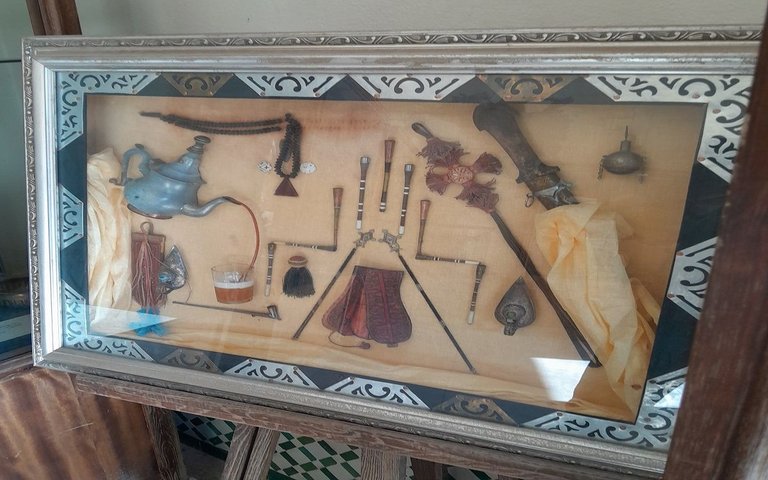
I found this poster on the wall talking about wood and I'll translate it for you below:
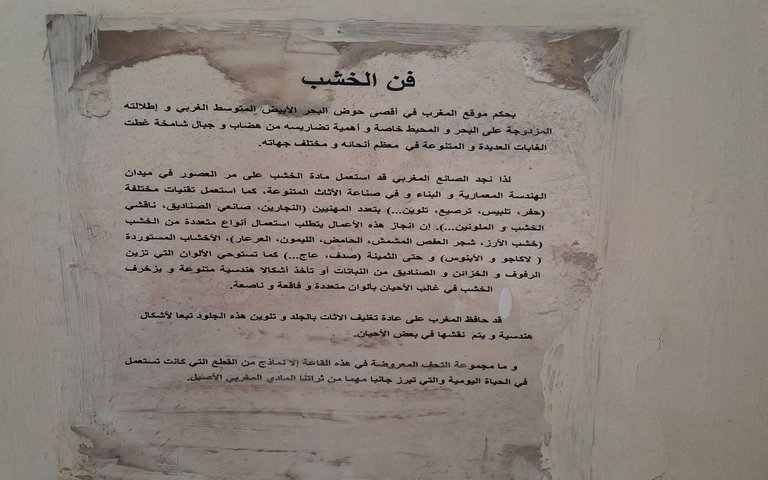
Morocco's geographical position, at the western end of the Mediterranean basin and opening onto the sea and ocean, gives it a wealth of varied and diverse tree forests covering most of its regions in different climates.
Moroccan craftsmen have been using wood since ancient times in architectural engineering and construction, as well as in the manufacture of furniture in a variety of shapes. Different techniques are also used (engraving, inlaying, assembling boxes, caskets, making wooden and coloured pieces, etc.). The craft requires the use of different types of wood such as cedar, thuja and argan, as well as imported woods (such as lacquer and ebony) and even European woods such as mahogany and pine... The craft consists of producing windows, doors, shelves, chests and cupboards in a variety of sophisticated artistic forms, as well as decorating the wood in relief with raised or inlaid motifs.
Moroccan craftsmen have retained the habit of decorating furniture with leather and colouring these pieces with geometric, practical or floral motifs on the surfaces.
As for the collections of wooden planks, they illustrate models of old panels once used in everyday life, highlighting a part of our authentic material heritage.
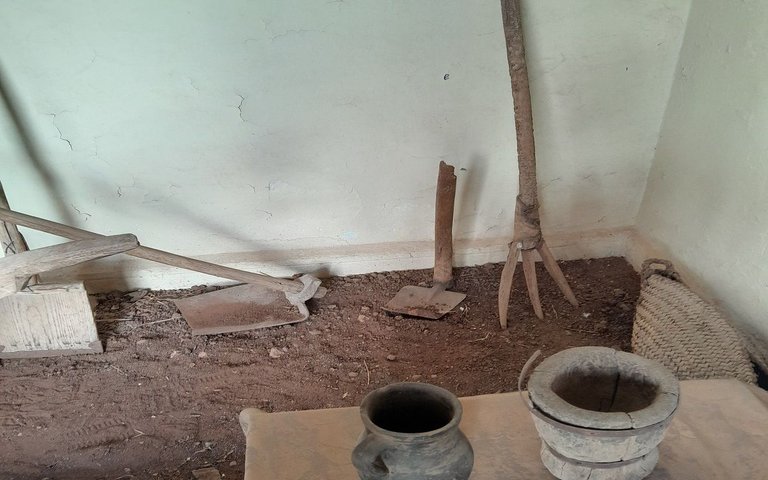
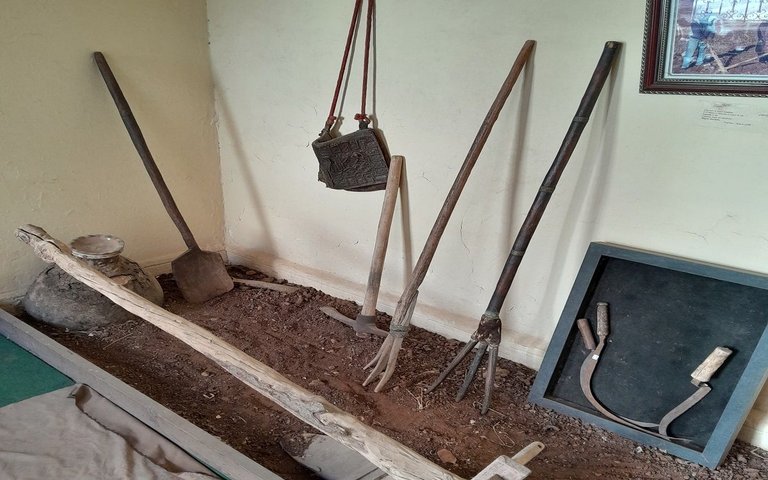
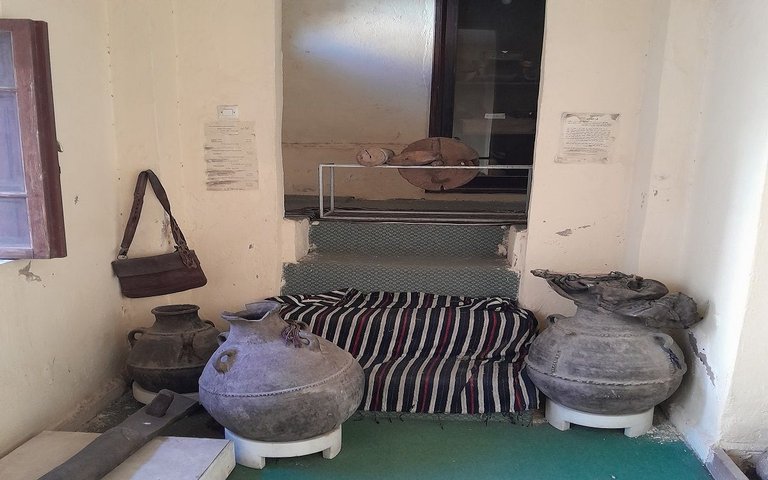
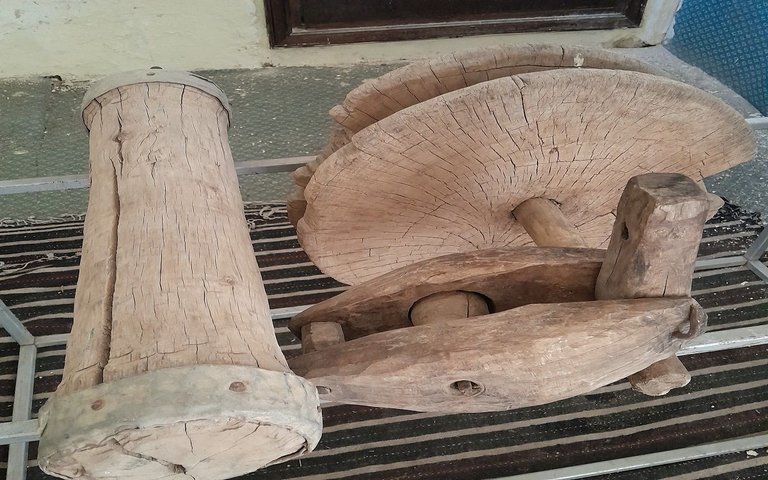
On leaving the museum, I also discovered an area dedicated to traditional carpets and weavings. The patterns and colours of each carpet reflect the different regions of Morocco. These handicrafts are of incomparable beauty and quality.
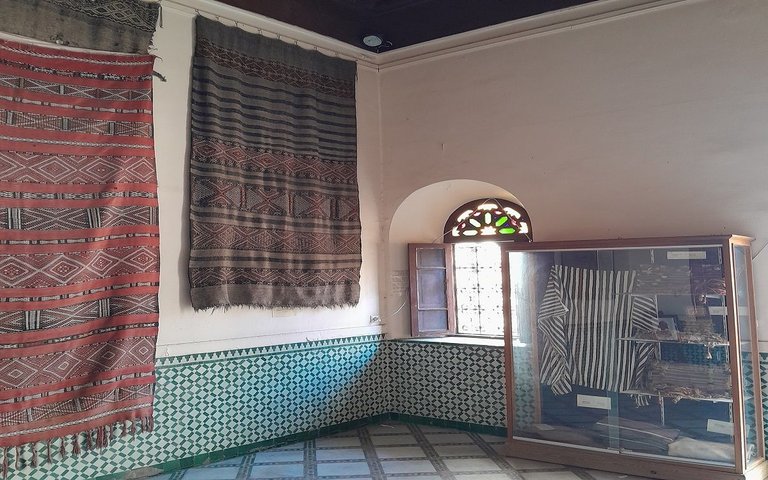
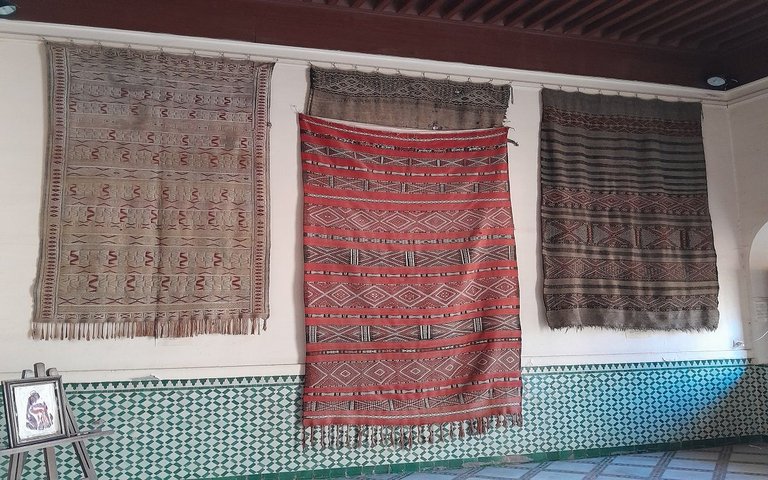
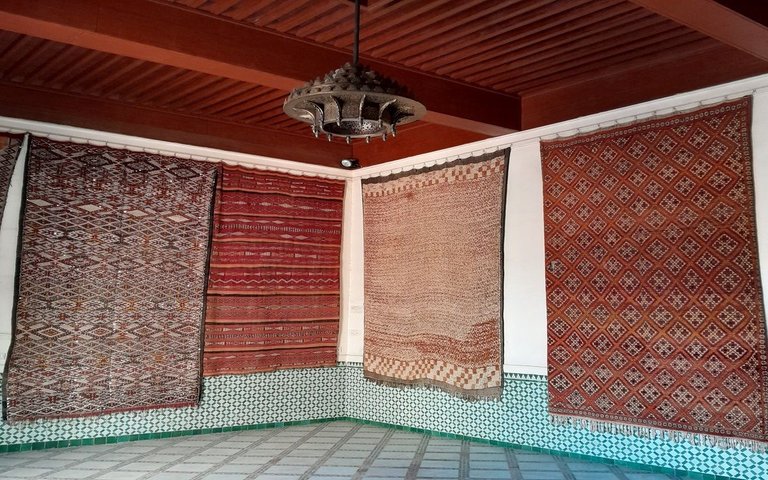
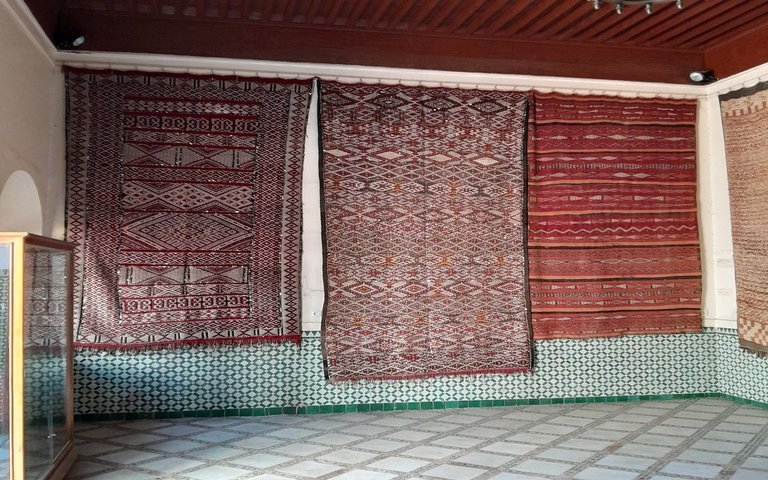
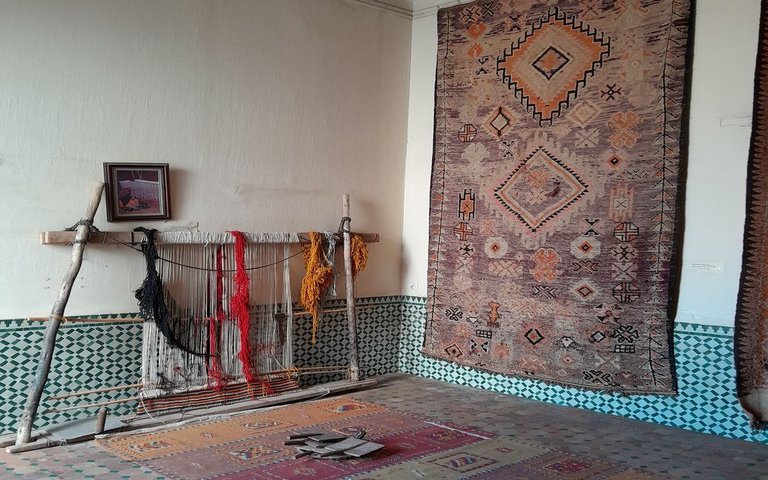
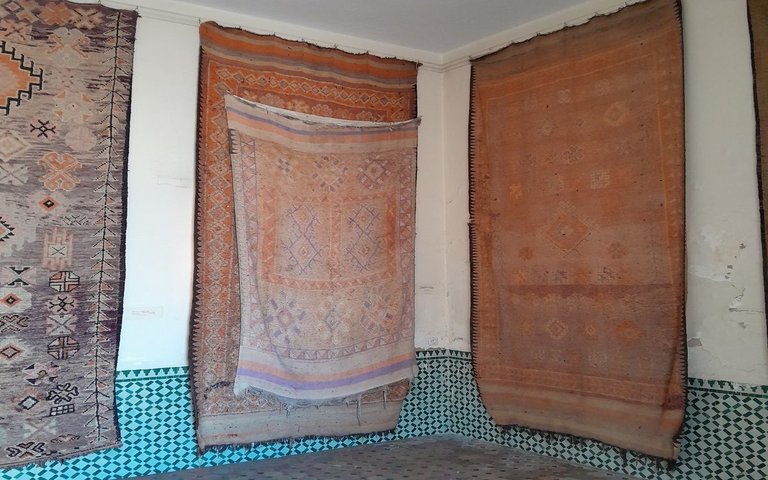

Now I'm going to enter the Meknes medina and explore some of its crannies!
Numerous hotels and inns welcome tourists from all over the world to this region, who have come to discover the medina of Meknes, a centuries-old city. In this post, I show you a glimpse of one part of the medina and hope to explore the other areas soon, as well as the various historic mosques located in the heart of the medina!
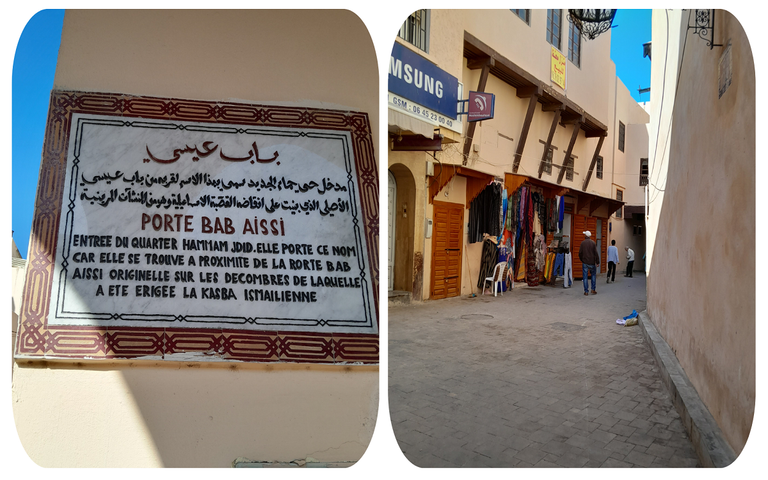
Welcome to the Bab Aissi Gate, an emblematic entrance to the traditional district of Hammam Jdid. This gate takes its name from its proximity to the old Bab Aissi gate, which was once a strategic point for moving around the city. The plaque states that the Kasba Ismaïlienne was built on the remains of this original gateway, bearing witness to the region's rich past and architectural heritage.
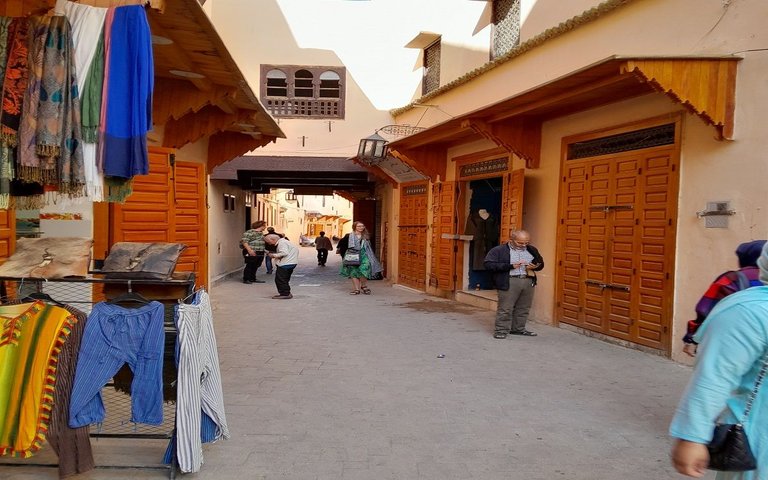
The people here are very welcoming. One gentleman even offered to show me the places of interest in the town and gave me some useful tips.
There are craft shops, all decorated with carved wooden doors and traditional arches over the entrances. Each neighbourhood has its own charm. What I particularly like here is the feeling of travelling back in time, with the narrow streets and ancient buildings.
I continue on my way and come across a beautiful fountain, one of the many that adorn the medina. It's incredible to see so many fountains, even if some of them are dry at the moment.
The alleyways are so narrow that you'd think you were in a labyrinth. It's easy to get lost here, but that's what makes it so much more exciting to explore. The medina reminds me of the old cities of Marrakech or Fez, with their tight passageways and ancient walls.
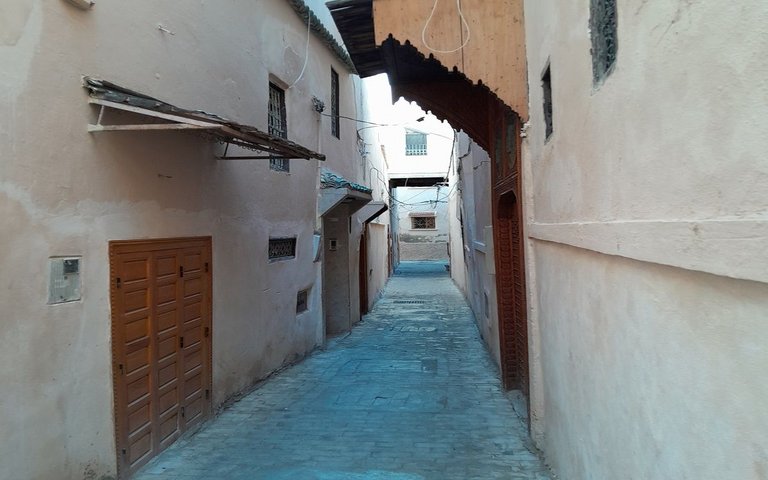
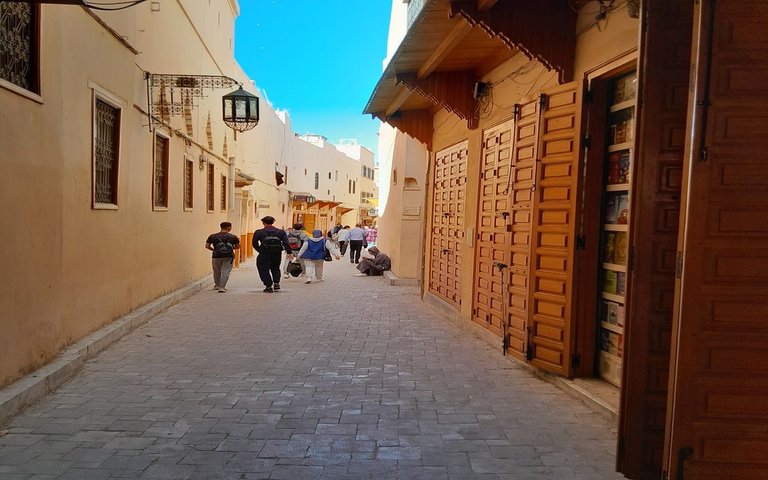
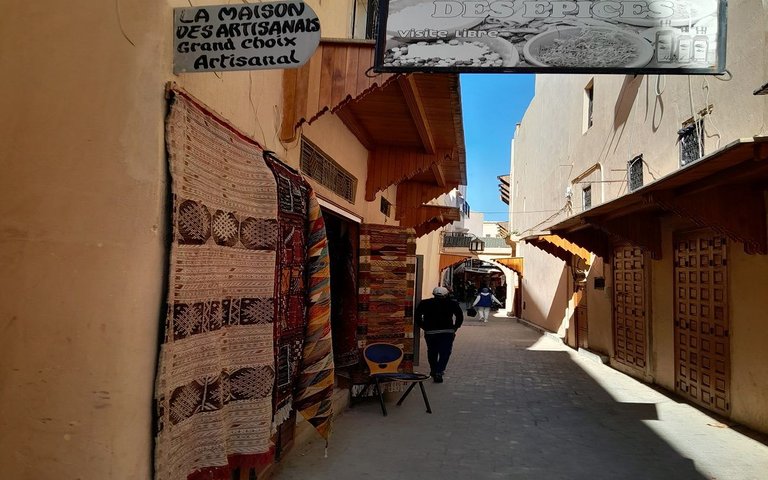
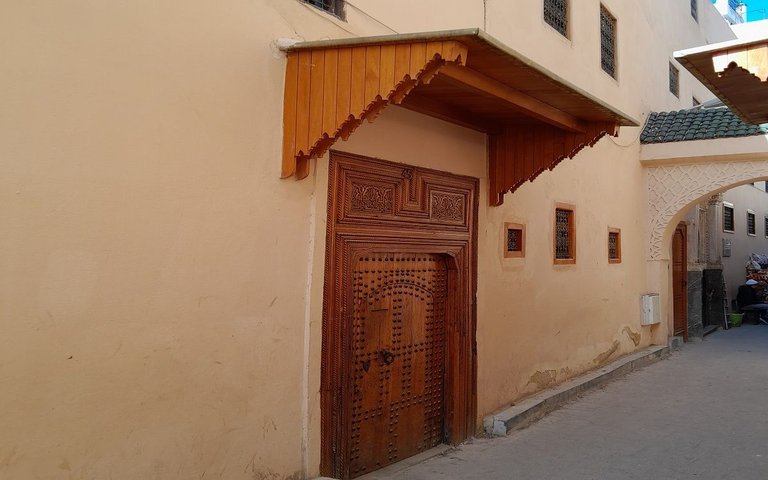
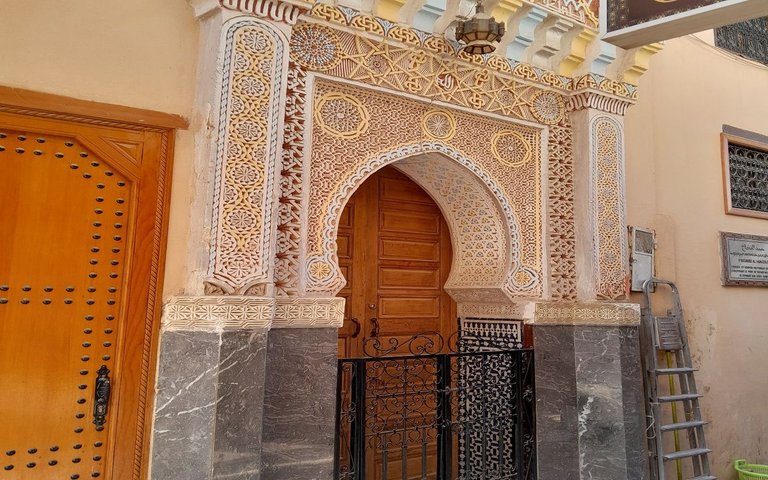
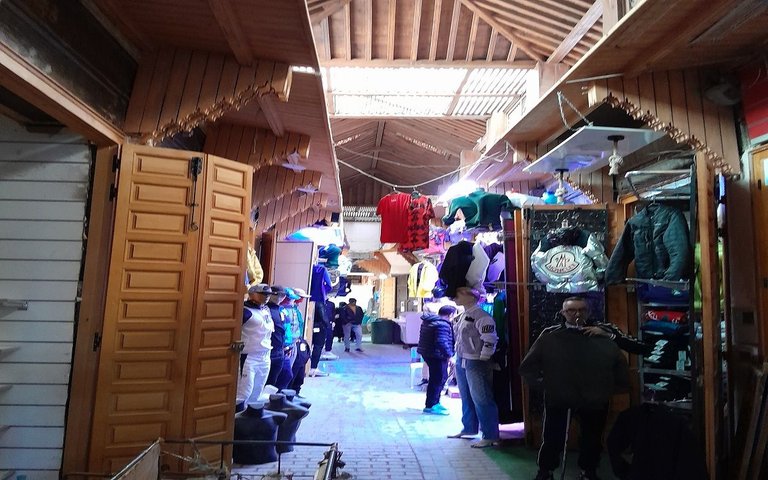
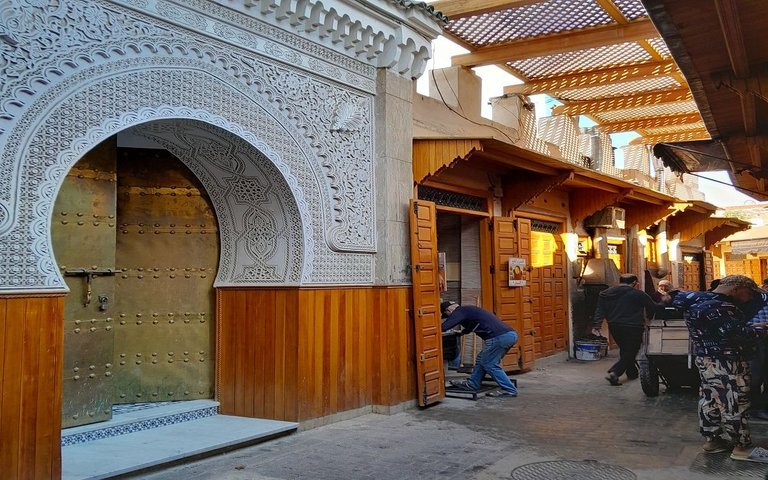
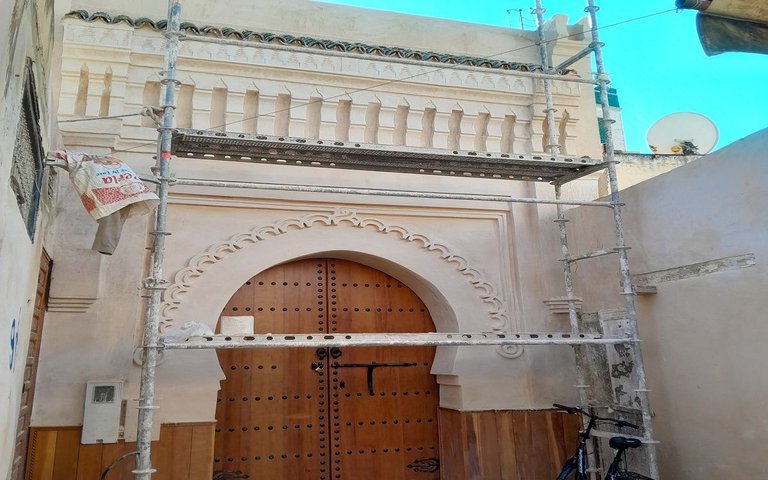
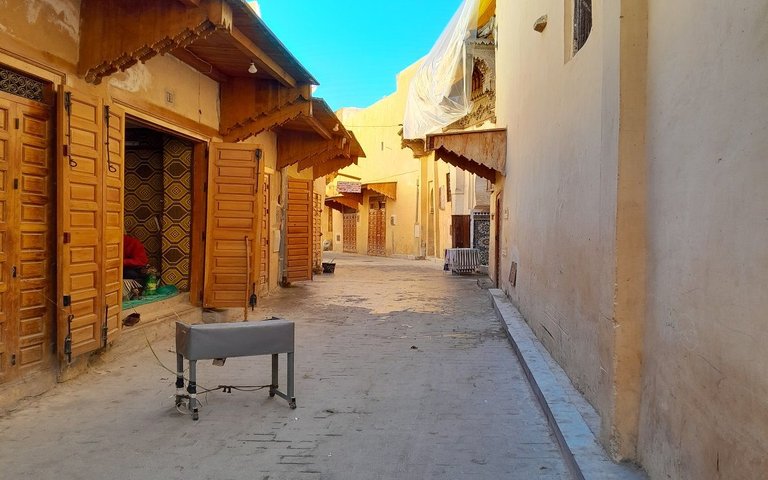
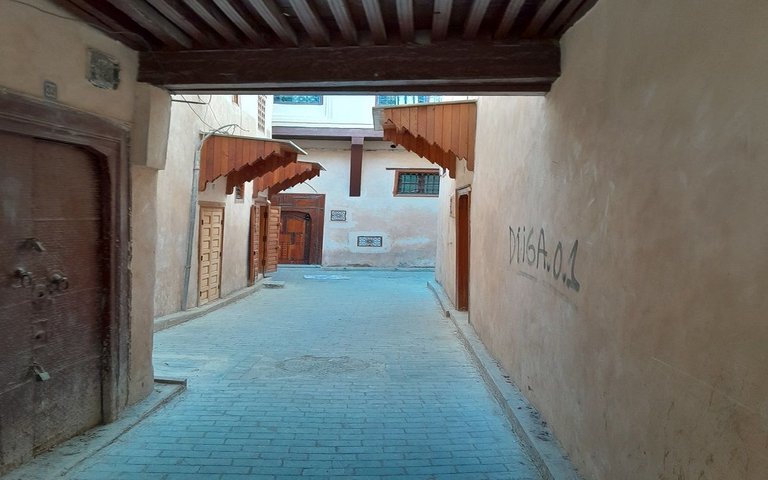
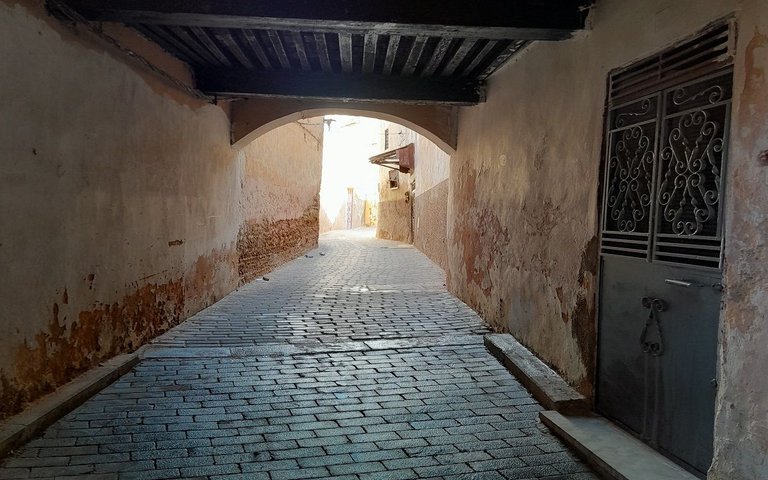
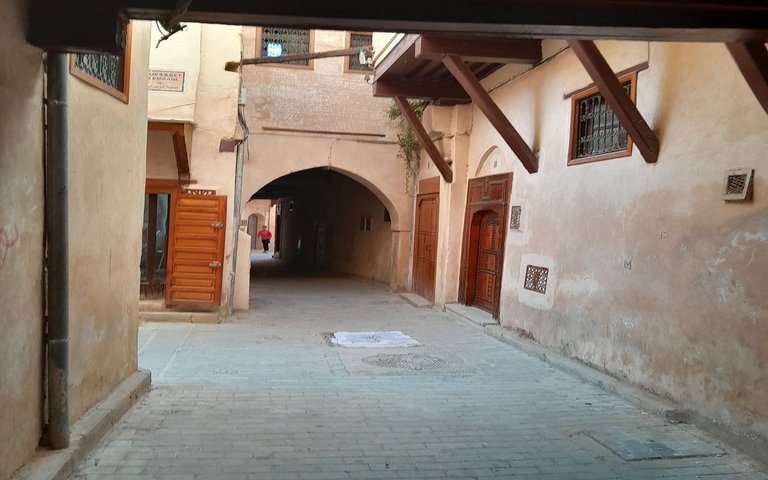
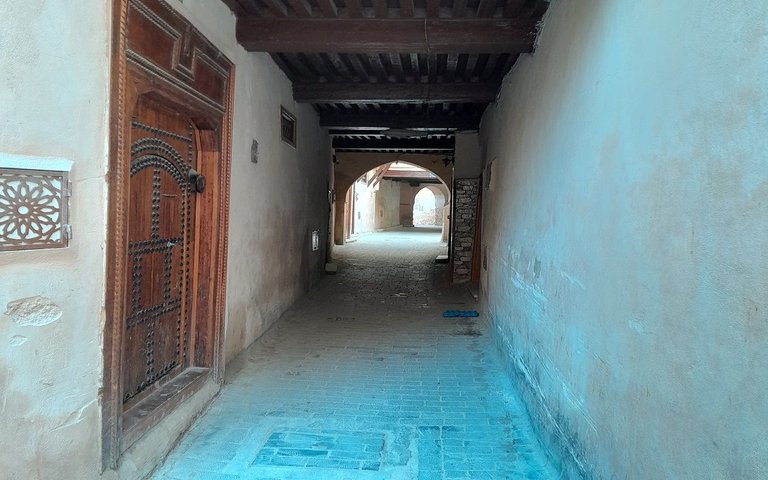
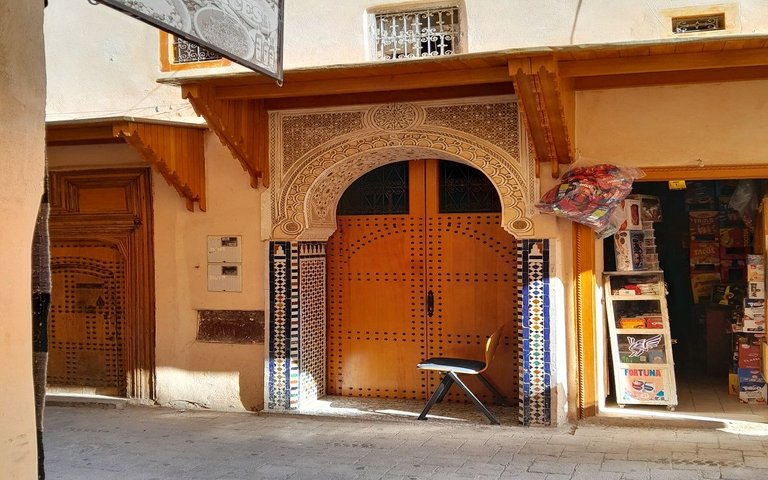
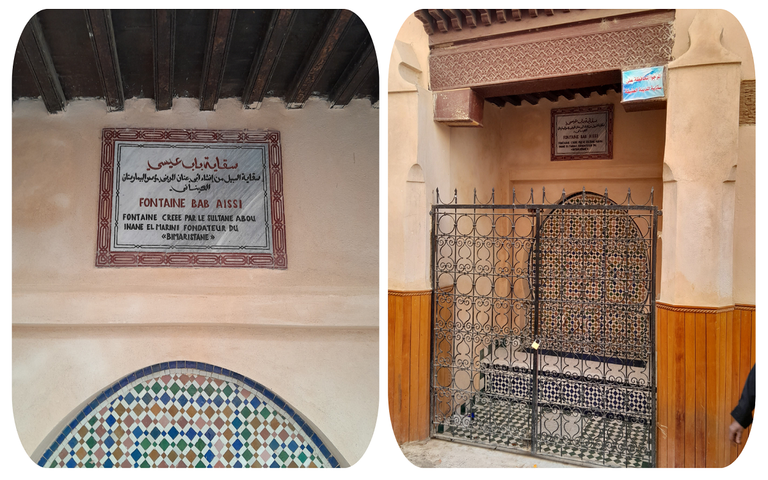
This historic fountain, a real treasure from the Marinid era, is located in Bab Aissi. The plaque states that it was created by Sultan Abu Inane el Marini, known for his love of architecture and his investment in the development of public infrastructure, such as fountains and hospitals - what was known as a ‘bimaristan’ at the time.
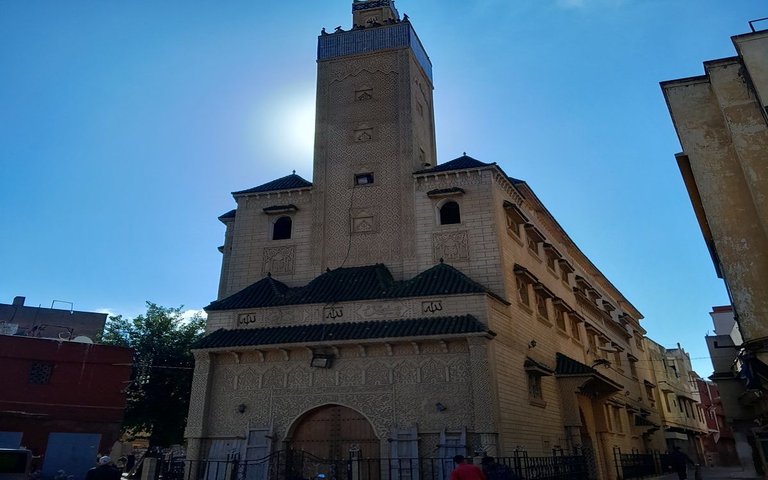
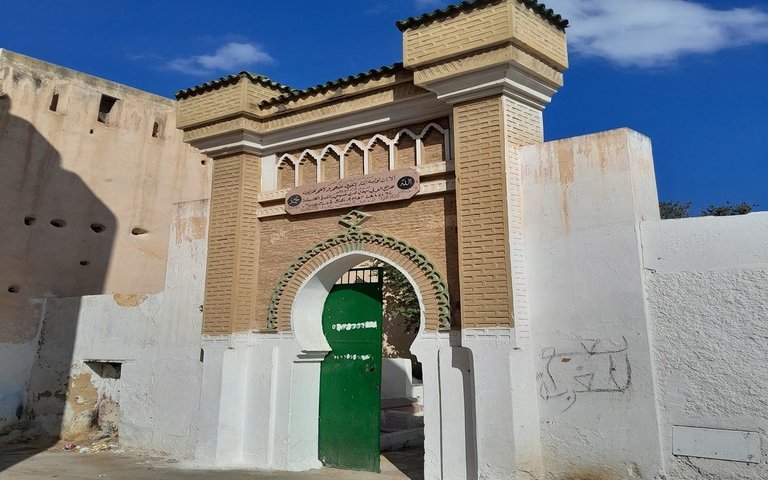
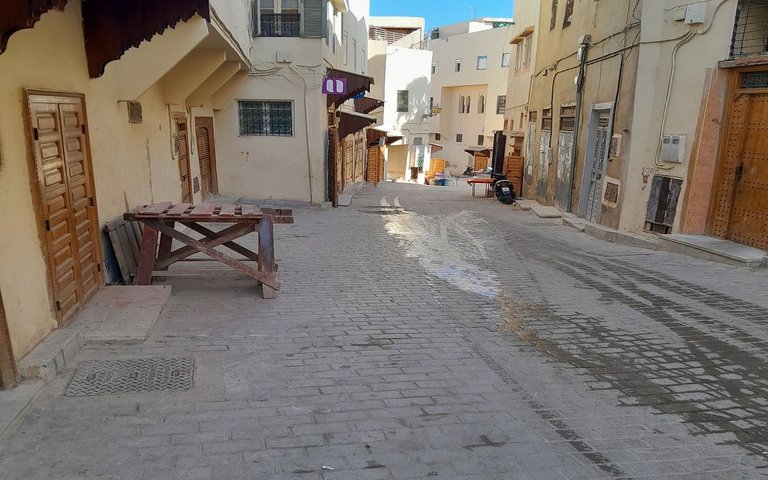
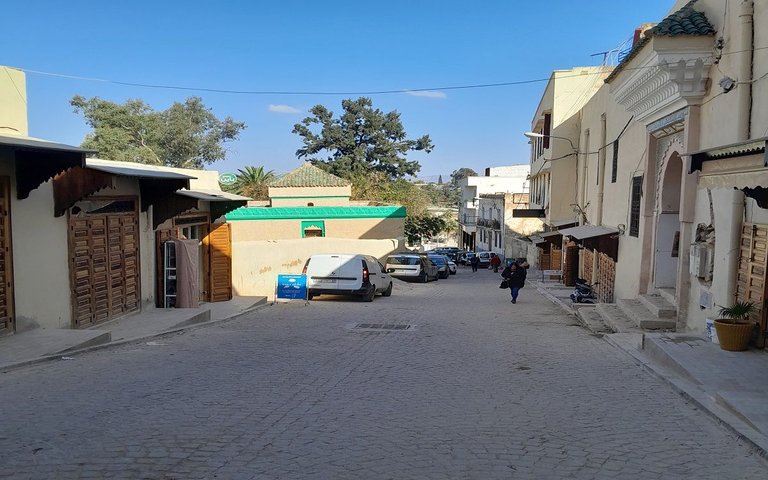

I'm coming to the end of my blog!
I hope you enjoyed the walk through the medina and the visit to the Meknes museum. Take care and see you soon!

I'd like to thank you warmly for your feedback on my content. I'd also like to thank you for sharing and upvoting. Your support and encouragement motivate me enormously to continue sharing my experiences with you. Thanks to you, I feel inspired to create even more quality content!
Photos taken by my own phone (Samsung Galaxy A04s).




